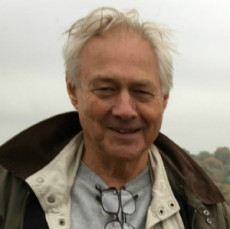Srebrenica, July 28: Standing in the debris of what used to be her family house, Beba Hadzic confronts the central fact of Srebrenica today: the place is virtually empty. Srebrenica the symbol may be growing, but Srebrenica the community is shrinking.
Several cars are parked on the street, but their license plates are from Holland, Sarajevo, Sweden. The Muslims who inhabited this part of the town were all middle class, educated and cultured. They are either dead or have built new lives as refugees. They may return for a weekend here and a few days there, but almost no-one plans to return permanently.
Srebrenica clean-up – but no people
“Why would we want to come back?” asks Beba as she picks through the plaster and rotten window frames. The only reason is a connection with the past – and in Srebrenica that is bittersweet. Beba’s neighbor is busy rebuilding his house, but he is a businessman and can afford it. He has no intention of returning. In the entire street, we count less than twenty people living permanently in over 150 houses. There are almost no lights at night – no twinkle in this Alpine village.
This impression of an emptying town is born out by random figures. Before the war, over 37,000 people lived in the Srebrenica municipality. Today, the best estimate is around 10,000. 7,600 inhabitants over the age of 18 are entitled to vote in the October elections, which would also put the population at between 10,000 and 11,000. 598 children – Muslim and Serb – are enrolled at primary school. This is just 10 per cent of the pre-war enrollment (5,898).
There seems little chance of this changing soon. The road is littered with abandoned factories. Before the war there were seven companies operating in the Potocari industrial zone (including the infamous battery factory). Only two have been revived in the past 13 years and one – owned by Serbians – does not employ local workers. Most of the foreign aid has gone into rebuilding houses and infrastructure. The Danish Refugee Council has created 20 new jobs, since the beginning of 2007, but at a cost of 3,000 Euros apiece.
Another big impediment to the return of refugees is psychological. The Hague Tribunal has only indicted thirteen individuals for the Srebrenica massacre, and almost all were big fish like Karadzic.
This still leaves hundreds of locals who may well have had a hand in butchering Magbula’s husband and Beba’s brother in law – a fact that they find chilling. In 2005, a joint commission of Serbs and Bosniaks determined the exact number of massacre victims (8,372), and fingered abut 800 locals who might have been implicated. Several are still in positions of power.
This is deeply troubling for the massacre survivors. Beba was stunned to turn on the television after the massacre and see Milenko Zivanovic, her former close friend, at Mladic’s side after the town was taken. She was even more stunned when Zivanovic put his face through her car window when she parked in the town a few years back and asked what she was up to. She was shaking all the way back to Tuzla.
Milos Mukoslavavic, who occupied Beba’s apartment after the war and stole the faucets, is standing for the post of mayor in the October elections, on the ticket of Dodik, the Prime Minister of the Serb Republic.
Millions of refugees have swallowed similar fears and one can only admire their bravery. Beba herself is fortified by helping other women. She is by nature a person of authority, and channeling her energy into helping others is one of the ways she copes and survives. As such she exemplifies the philosophy of our good friends at the Survivor Corps (formerly the Landmine Survivors Network), who say that the best way to survive war trauma is to give back to one’s community.
But would Beba return to Srebrenica – and could she make the commitment to open a weaving center, always assuming the money could be found? She ponders the question. Srebrenica is still an unfriendly place, to Beba. Here she is vulnerable – even the current mayor (a Muslim) is no friend. But in Tuzla, at Bosfam House, she is among friends and in control. In time this will change, but if Beba comes back it will be at her own speed and on her own time.
Posted By Iain Guest
Posted Jul 28th, 2008

